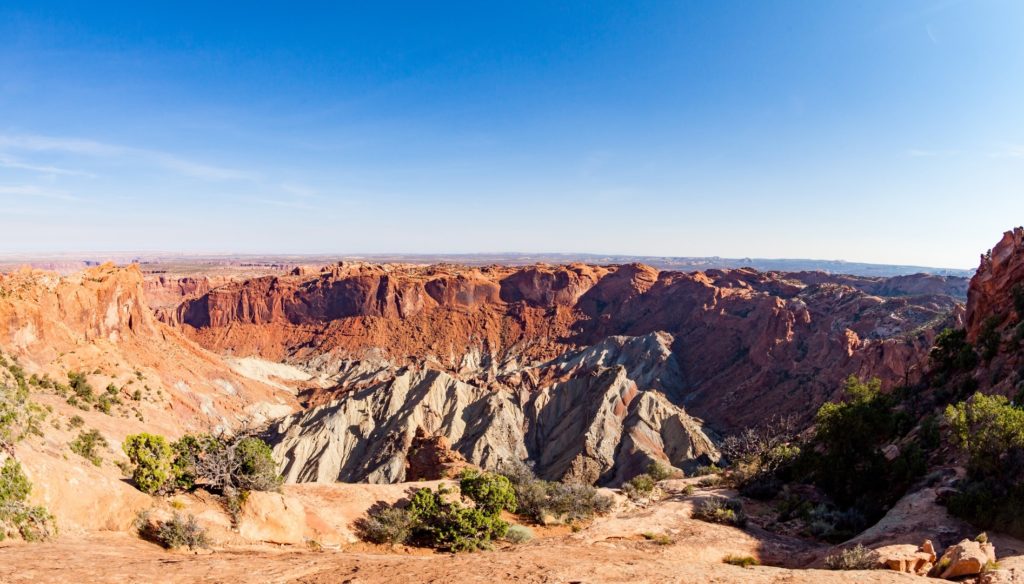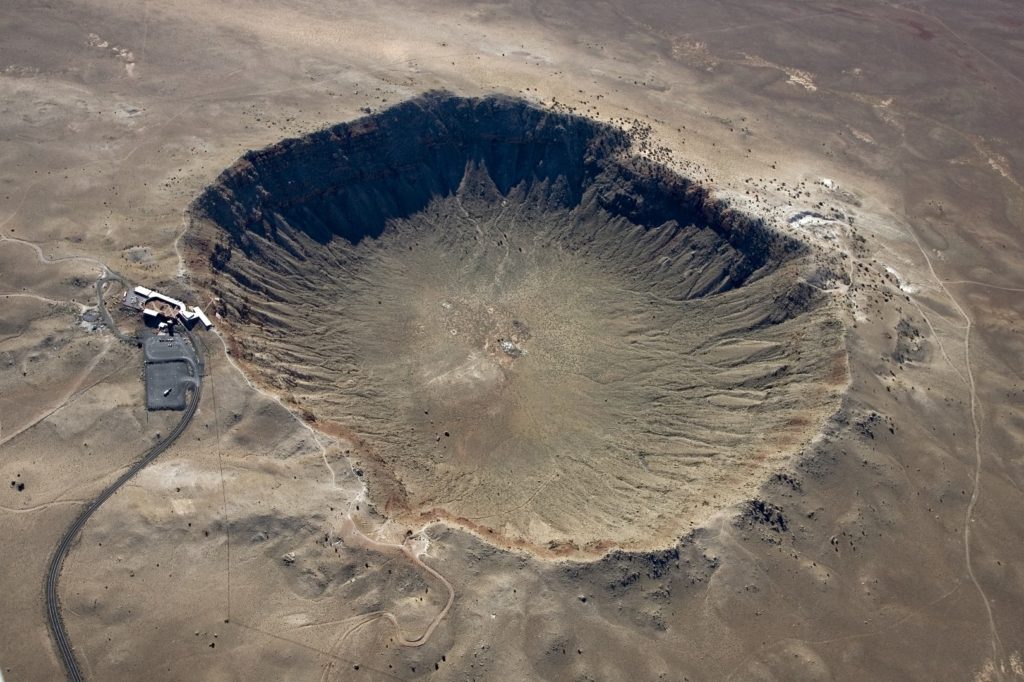See Impact Craters on Earth
Impact craters are created when an object flying through space impacts the surface of a larger body (a planet or moon). The Moon, which has almost no atmosphere, is covered with impact craters so large and well-preserved that they are visible from Earth. Our planet has few that are easy to see from the surface or even from above. The processes of erosion, sedimentation, glaciation, and plate tectonics have erased the evidence of most impacts. Any impacts that struck in the oceans (71% of the Earth’s surface), are difficult to investigate and are erased by similar processes underwater.
Barringer Meteor Crater in northern Arizona is the best preserved example in the United States and probably the world. That 3/4-mile wide crater was created from an impact about 50,000 years ago and has survived due to the dry environment. The owners of the property have built a visitor center with exhibits about the crater and other topics related to recent meteors reaching Earth and other craters in the Solar System.
 Wide angle view of Barringer Meteor Crater
Wide angle view of Barringer Meteor Crater
The largest impacts discovered in the US are not visible at all. The Manson Crater in Iowa, the Beaverhead Crater on the border of Idaho and Montana, and the Chesapeake Crater in Chesapeake Bay, Virginia are all just proven theories at this point.
Only a few impact craters in the US can be seen from the ground. Some look like craters and others look like mountains.
Below is a list of those you can visit. Click on the link to see a topographic map and a satellite image of the crater.
Barringer Meteor Crater, Arizona
Meteorite Crater, Nevada
Odessa Meteor Crater, Texas
Sierra Madera Mountain (center of a crater), Texas
Upheaval Dome Crater, Canyonlands National Park, Utah
–
 Upheaval Dome from the rim trail
Upheaval Dome from the rim trail
A memorial marks the location of the Estherville Meteorite which hit the Earth in an Idaho field in 1879. While the crater was only 15 feet deep and is now gone, this is one of the most recent impacts. Most meteors burn up in our atmosphere and never reach the surface.
To see all the documented impact craters on our planet, visit the Earth Impact Database.
Related Places
| Mountain | State |
|---|---|
| Meteor Crater (Barringer) | AZ |
| Meteorite Crater | NV |
| Odessa Meteor Crater | TX |
| Estherville Meteorite Historical Marker | IA |
| Sierra Madera | TX |
| Canyonlands National Park | UT |
